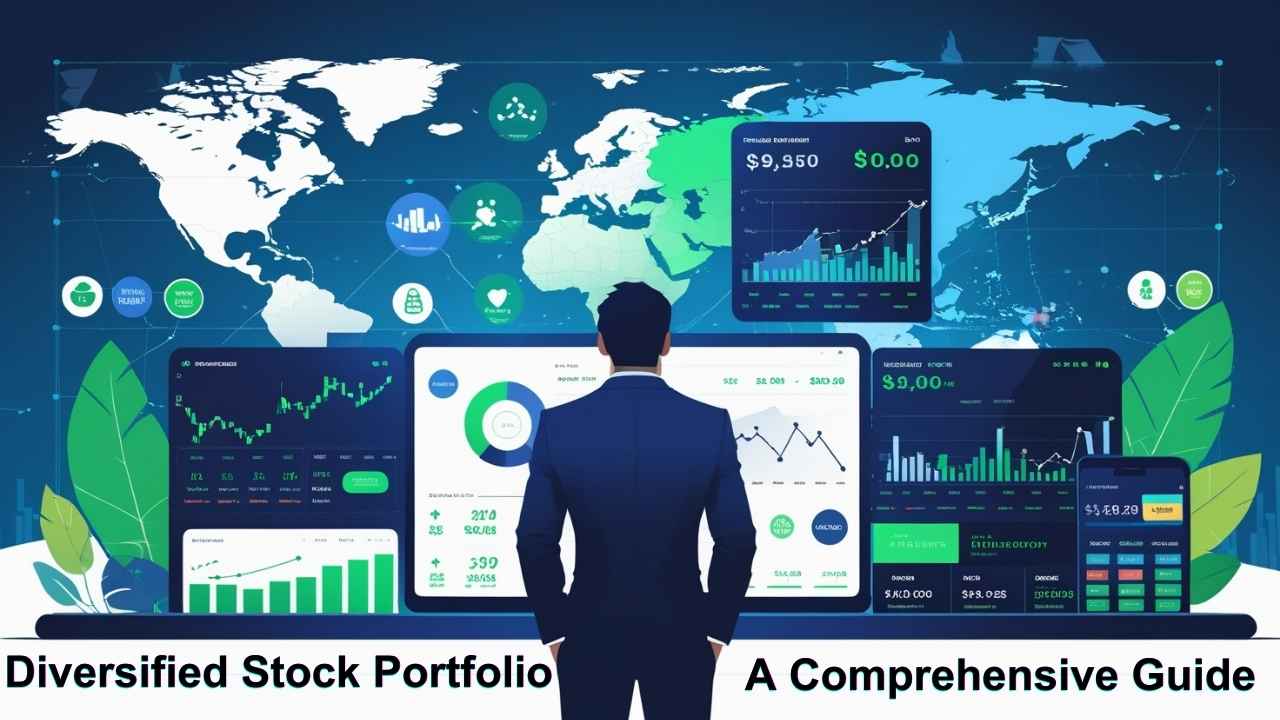The correct investment strategy may be the key. Moving into 2025, investors are confronted with a special combination of opportunities and dilemmas—from technological advancements to changing international markets. Whether you are an experienced trader or a new entrant, knowledge of these strategies is essential in creating a strong portfolio and keeping pace with market trends.

The stock market is no longer the immutable sphere it used to be. With rising market uncertainty, changing geopolitics, and technological advances, investors need to evolve by embracing a combination of proven principles and new strategies. In this article, we’ll discuss the top 10 stock market investment strategies for 2025. Each strategy is formulated to assist you in managing risk, achieving high returns, and matching your investments with your goals. Let’s move on to these revolutionary methods that can reshape your portfolio.
1. Diversification and Global Exposure
Diversification is still the foundation of prudent investing. In 2025, diversifying your investments in various sectors, asset classes, and foreign markets is more important than ever.
Key Points:
- Reduce Risk: Limit exposure to any single market downturn by investing in a mix of domestic and international stocks.
- Capture Global Growth: Take advantage of emerging markets and global trends.
- Use of ETFs and Mutual Funds: These vehicles offer built-in diversification, making it easier to access a wide range of assets.
2. Value Investing
Value investing is the process of finding undervalued stocks with good fundamentals but selling at below their intrinsic value.
Key Points:
- Long-Term Focus: Emphasize quality companies that are temporarily mispriced by the market.
- Risk Mitigation: By buying undervalued stocks, you create a margin of safety.
- Research-Driven: Utilize financial analysis to uncover hidden gems in the market.
3. Growth Investing
Growth investing targets companies that can grow beyond average. The strategy is a good fit for 2025, when technological innovation shapes the market.
Key Points:
- High Potential: Invest in companies with strong earnings growth and market disruption potential.
- Future-Oriented: Look for industries on the cutting edge, such as renewable energy, tech, and biotech.
- Volatility Management: Be prepared for higher volatility, balanced by potential high returns.
4. Dividend Investing
Dividend investing focuses on firms that offer consistent dividend payments. The strategy is attractive for investors looking for regular income in addition to capital appreciation.
Key Points:
- Stable Income: Dividend stocks can offer a reliable income stream, even during market downturns.
- Reinvestment: Reinvesting dividends can compound returns over time.
- Quality Companies: Focus on companies with a consistent history of dividend payments.
5. Index and ETF Investing
Index funds and ETFs provide a passive, low-cost investment strategy that tracks the performance of a diversified market index.
Key Points:
- Cost Efficiency: Lower fees compared to actively managed funds.
- Simplicity: Provides immediate diversification with a single purchase.
- Long-Term Growth: Ideal for investors who prefer a hands-off approach to long-term market exposure.
6. Algorithmic and Quantitative Trading
Taking advantage of technology and data analysis, algorithmic trading utilizes computer-based models to make trades at the most favorable times.
Key Points:
- Speed and Precision: Algorithms can process vast amounts of data and execute trades within milliseconds.
- Data-Driven Decisions: Minimize emotional bias by relying on quantitative metrics.
- Innovative Edge: Particularly useful in today’s fast-paced markets where real-time data is key.
7. Environmental, Social, and Governance (ESG) Investing
ESG investing favors businesses that excel on environmental, social, and governance fronts. Investors are increasingly incorporating their values in their portfolios.
Key Points:
- Ethical Investing: Invest in companies that adhere to sustainable and ethical practices.
- Long-Term Viability: ESG-focused companies often demonstrate strong management and lower regulatory risks.
- Growing Demand: As public awareness of sustainability issues rises, ESG investing is becoming a mainstream strategy.
8. Momentum Trading
Momentum trading is about taking advantage of the short-term direction in the market by purchasing stocks that are increasing and selling stocks that are weakening.
Key Points:
- Trend Analysis: Use technical indicators and chart patterns to time market entry and exit points.
- Active Management: Requires regular monitoring of market conditions and quick decision-making.
- Risk Management: Set clear stop-loss orders to limit potential losses during market reversals.
9. Long-Term Buy and Hold Strategy
The buy and hold strategy is an old school method in which investors buy stocks and keep them for a long time, weathering market volatility.
Key Points:
- Compounding Returns: The power of compounding over time can significantly boost long-term returns.
- Reduced Transaction Costs: Fewer trades mean lower fees and reduced tax implications.
- Emotional Resilience: Encourages a disciplined, patient approach that can help investors avoid the pitfalls of market timing.
10. Hybrid Investing Strategies
Hybrid approaches mix elements from different investment methods to customize an approach that is suited to your individual financial aspirations and risk comfort level.
Key Points:
- Customization: Blend growth, value, dividend, and other strategies to create a balanced portfolio.
- Flexibility: Adapt your strategy as market conditions change over time.
- Risk Balancing: Use a mix of aggressive and conservative investments to manage overall portfolio risk.
Conclusion
As we navigate the ever-changing landscape of 2025, there is no single strategy that will ensure success. The secret to success in the stock market is knowing your own risk tolerance, financial objectives, and constantly shifting market conditions. Whether you favor tried and true methods such as value investing and long-term buy and hold, or new techniques such as algorithmic trading and ESG investing, a balanced, diversified portfolio is crucial. By adopting a combination of these top 10 investment strategies, you can construct a strong portfolio that can help you ride through market fluctuations and take advantage of new opportunities. Happy investing!
Frequently Asked Questions (FAQ)
What are the best investing strategies for 2025?
The best strategies combine traditional methods with innovative approaches. Diversification, value investing, growth investing, and ESG investing are among the top strategies recommended for 2025.
How do I select the appropriate strategy for my portfolio?
Your selection is based on your investment horizon, risk tolerance, and financial objectives. Think about a hybrid strategy that combines several strategies to create a balanced portfolio.
Is algorithmic trading appropriate for all investors?
Algorithmic trading is more sophisticated and generally involves a good grasp of market data and technology. It might be most appropriate for sophisticated investors or those who are using professional advisors.










